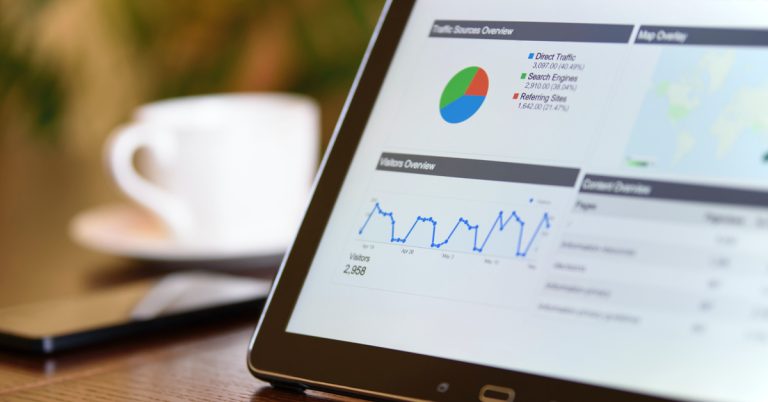The past few years have witnessed a monumental shift in the way we approach and interpret data. One of the driving forces behind this transformation is the emergence of ChatGPT, a powerful language model that has revolutionized the field of natural language processing. With its ability to understand and generate human-like text, ChatGPT has opened up new possibilities for data analytics, enabling us to gain deeper insights into complex datasets and make more informed decisions.
We’ll take a deep dive into the intersection of ChatGPT and data analytics, exploring how this groundbreaking technology is changing the game and paving the way for a more intelligent and data-driven future.
Table of Contents
Introduction to ChatGPT and Data Analytics
Data analytics has always been about making sense of large volumes of data to uncover insights and drive better decision-making. But the traditional approaches to analyzing data have been limited by the tools available. For example, business intelligence tools allow us to visualize and explore data, but they can’t help us answer more complex questions. That’s where natural language processing (NLP) comes in, and ChatGPT, in particular.
ChatGPT is a cutting-edge NLP model developed by OpenAI. It uses deep learning algorithms to analyze and interpret large volumes of text data, just like a human would. But unlike a human, ChatGPT can process and analyze this data at an incredible speed and scale, making it an ideal tool for data analytics.
With ChatGPT, data analytics professionals can ask complex questions in natural language and receive answers in seconds. This allows for faster and more accurate decision-making and helps organizations stay ahead of the competition.
But ChatGPT isn’t just useful for analyzing text data. It can also be used to analyze structured data, such as financial data or customer data. This is because ChatGPT can generate human-like text descriptions of this data, making it easier for humans to interpret.
Understanding ChatGPT: A Brief Overview
ChatGPT is a state-of-the-art natural language processing (NLP) model that uses deep learning algorithms to analyze and interpret large volumes of text data. It was developed by OpenAI, one of the leading artificial intelligence research institutes in the world.
At its core, ChatGPT is a neural network that has been trained on a massive amount of text data, including books, articles, and websites. This training data allows ChatGPT to understand the nuances of natural language and generate human-like responses to text-based queries.
One of the key features of ChatGPT is its ability to generate text that is indistinguishable from text written by humans. This means that when you ask ChatGPT a question, it will generate a response that sounds like it was written by a human, even though it was generated by a machine.
To achieve this level of accuracy, ChatGPT uses a technique called transformer architecture, which is a type of neural network that can process sequences of text. This allows it to understand the context of a piece of text and generate responses that are relevant and meaningful.
The Evolution of Data Analytics: From Descriptive to Predictive
Data analytics has come a long way since its early days when it was primarily used to generate descriptive reports that provided an overview of past events. But as the field has evolved, so too has the way we approach data analytics. Today, data analytics is less about reporting on what has happened in the past, and more about predicting what is likely to happen in the future.
The shift from descriptive analytics to predictive analytics has been driven by advances in technology, including machine learning and artificial intelligence.
Descriptive analytics: Descriptive analytics, which is still an important part of data analytics, involves analyzing data to gain an understanding of what has happened in the past. This includes generating reports that summarize key performance indicators, such as sales figures or website traffic. Descriptive analytics is useful for identifying trends and patterns, but it doesn’t provide insights into why those trends are occurring or what is likely to happen in the future.
Predictive analytics: Predictive analytics, on the other hand, uses machine learning algorithms to analyze data and make predictions about future events. This involves analyzing historical data to identify patterns and trends, and then using that information to make predictions about future events. For example, predictive analytics can be used to forecast sales figures for the coming quarter or to identify customers who are at risk of churning.
By using predictive analytics, businesses can anticipate customer needs and preferences, optimize their marketing strategies, and reduce operational costs.
How ChatGPT is Changing the Game in Data Analytics
ChatGPT is a state-of-the-art natural language processing (NLP) model that is transforming the way we approach data analytics. Let’s look at some key use cases for ChatGPT in data analytics.
1. Sentiment analysis: ChatGPT can be used to analyze large volumes of customer feedback, such as online reviews and social media posts, to identify patterns and trends in customer sentiment. This can help businesses to identify areas for improvement and develop more effective marketing strategies.
2. Customer service: ChatGPT can be used to develop chatbots and virtual assistants that can provide customers with personalized support and assistance. This can help businesses to improve customer satisfaction and reduce support costs.
3. Market research: ChatGPT can be used to analyze text data from a variety of sources, including surveys, customer feedback, and social media posts, to gain insights into market trends and consumer preferences. This can help businesses to stay ahead of the competition and develop products and services that meet customer needs.
4. Fraud detection: ChatGPT can be used to analyze text data from financial transactions, such as credit card statements, to identify patterns of fraudulent activity. This can help businesses to reduce financial losses and improve security.
5. Data visualization: ChatGPT can be used to generate natural language descriptions of data visualizations, such as charts and graphs, making it easier for non-technical stakeholders to understand and interpret the data.
Advantages and Limitations of Using ChatGPT in Data Analytics
ChatGPT has quickly become one of the most promising technologies for data analytics, providing a range of benefits for businesses across various industries. However, like any technology, it has its advantages and limitations.
Advantages of Using ChatGPT in Data Analytics:
- Faster analysis: One of the key advantages of using ChatGPT in data analytics is speed. ChatGPT can analyze large volumes of text data more quickly and accurately than humans, making it an invaluable tool for businesses that need to process large amounts of data in real time.
- Deeper insights: ChatGPT can help businesses to gain deeper insights into their data by identifying patterns and trends that may be difficult to spot using traditional analytical methods. This can help businesses to make more informed decisions and stay ahead of the competition.
- Personalization: ChatGPT can be used to develop chatbots and virtual assistants that can provide personalized support and assistance to customers. This can help businesses to improve customer satisfaction and build stronger relationships with their customers.
- Cost-effective: ChatGPT can be a cost-effective solution for businesses that need to process large volumes of text data. By automating the analysis process, businesses can save time and money, and focus their resources on other important areas of the business.
Limitations of Using ChatGPT in Data Analytics
- Data quality: ChatGPT’s ability to analyze text data is dependent on the quality of the data. If the data is noisy or contains errors, ChatGPT may produce inaccurate results.
- Bias: Like any machine learning algorithm, ChatGPT can be biased towards certain types of data or language. This can lead to inaccurate or incomplete analysis, particularly if the data being analyzed is not representative of the broader population.
- Lack of context: ChatGPT is designed to analyze text data based on statistical patterns and relationships, which means it may not always be able to understand the context or nuances of language. This can lead to misinterpretation of data or errors in analysis.
- Training data limitations: ChatGPT’s accuracy and performance are heavily reliant on the quality and quantity of the training data that it is fed. If the training data is incomplete or biased, it can limit the accuracy and effectiveness of the model.
- Ethical concerns: As ChatGPT becomes more advanced, there are growing concerns about its potential impact on society, particularly with regard to issues such as privacy, bias, and the potential misuse of the technology.
ChatGPT and Data Analytics: Current Trends and Future Directions
ChatGPT and data analytics are both rapidly evolving fields with a range of current trends and future directions. Here are a few examples of both.
Current Trends
1. Natural Language Processing (NLP): NLP is a key trend in both ChatGPT and data analytics, enabling machines to understand and process human language. NLP algorithms are being used to analyze text data, such as customer reviews or social media posts, and extract insights that can inform decision-making.
2. Big Data: With the rise of the Internet of Things (IoT) and the proliferation of digital devices, the amount of data being generated is increasing exponentially. This trend is driving the development of new data analytics techniques, including machine learning algorithms that can analyze and make sense of massive amounts of data.
3. Visualization: Data visualization is becoming increasingly important in data analytics, as it enables analysts to communicate complex data in a way that is easy to understand. Interactive dashboards and data visualizations are being used to help decision-makers quickly identify trends and insights.
Future Directions
1. Explainable AI: As AI and machine learning become more prevalent in data analytics, there is growing interest in developing algorithms that can explain their decisions and recommendations. Explainable AI is a key area of research in both ChatGPT and data analytics, as it can help build trust in AI and ensure that decisions are fair and ethical.
2. Contextual Analysis: Contextual analysis involves understanding the broader context in which data is generated, including social, cultural, and historical factors. This approach can help analysts identify patterns and trends that may not be immediately apparent and can lead to more nuanced insights.
3. Predictive Analytics: Predictive analytics involves using machine learning algorithms to forecast future trends and outcomes based on historical data. This approach can be used to identify potential risks or opportunities and can help decision-makers make more informed choices.
Conclusion: The Future of Data Analytics with ChatGPT
The future of data analytics with ChatGPT looks promising, as this technology has the potential to transform the way we analyze and use data. Some potential directions for the future of data analytics with ChatGPT include augmented analytics, natural language query, collaborative analytics, and personalization. ChatGPT can help to automate and enhance the data analysis process, facilitate communication and collaboration among data analysts and decision-makers, and present personalized insights and recommendations in a conversational format. By leveraging natural language processing and machine learning algorithms, ChatGPT can help us to access and understand data more easily and make better-informed decisions.













